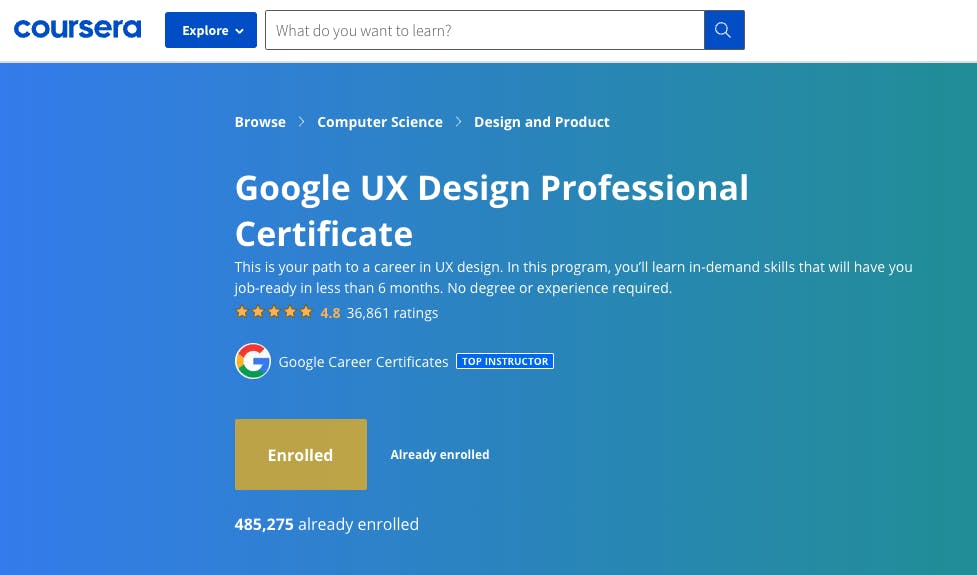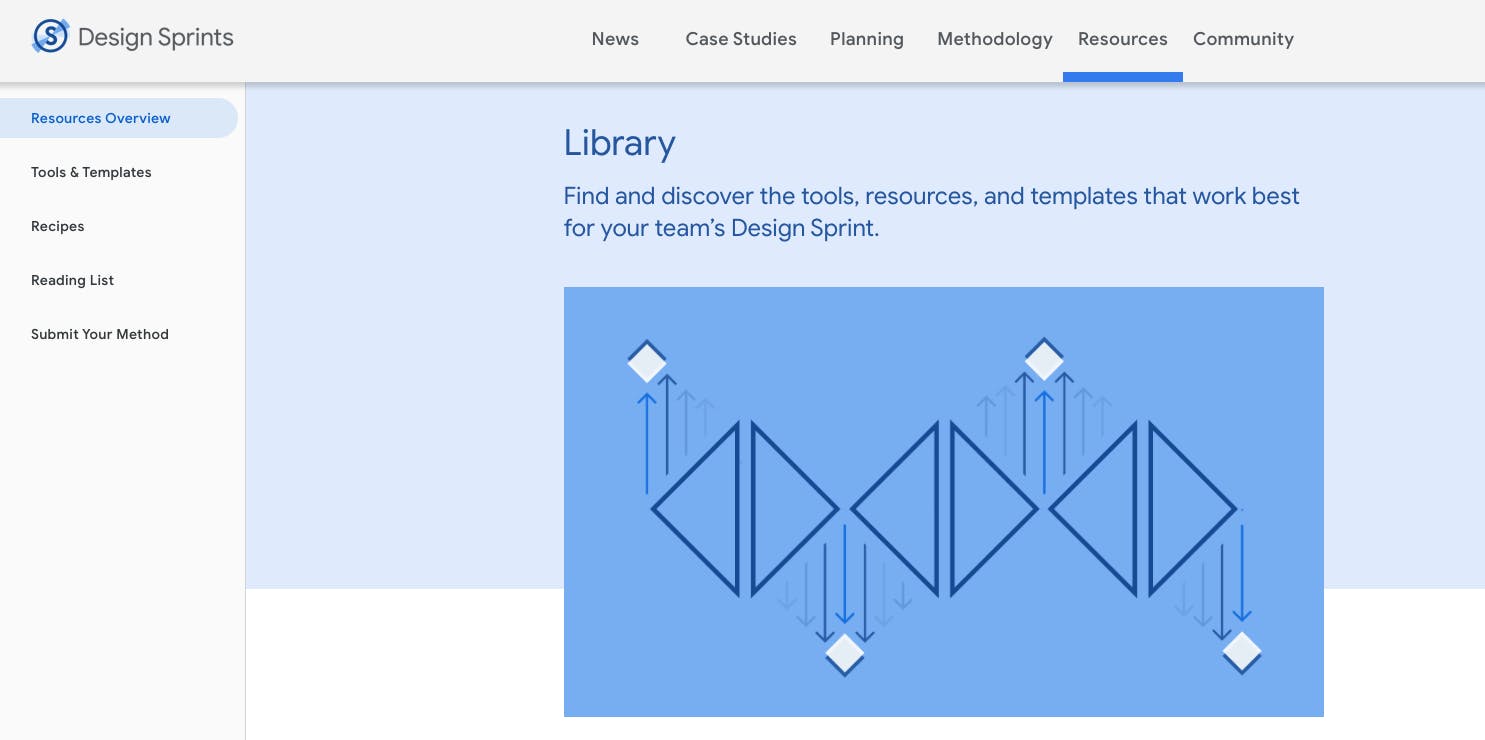I enrolled myself in the Google UX Design Professional Certificate this month and have been learning in deep about the principles and practices of User Experience in detail. I have been extremely intrigued, to say the least.

One particular topic that stood out is the idea of a Design Sprint. In this article, we will dive deep into what it is, why it's done, what are the steps, how to approach it, advantages, disadvantages, and some resources.
What is a Design Sprint?
Design Sprint is a five-day process to find the answer to difficult business problems by understanding and designing, prototyping, and testing ideas. Generally, there are 5 unique steps to the design sprint. But there is also a consensus that people look at design sprint as 6 different steps. We will talk about these steps down below.

Working together in a sprint, you can shortcut the endless debate cycle and compress months of time into a single week.
In Laymen's terms, from Monday to Friday, you focus on a particular problem. In these five days, you understand and define the terms of the problem and then find different solutions to the problem, design the best solution, prototype it, and test it in real-time to arrive at the proper solution.
Who's behind this idea?
The concept of Design Sprint was initially put forth by Jake Knapp back in 2010. If you are not aware of Jake, he is the author of the popular productivity book called Make Time: How to Focus on What Matters Every Day.

That image is so big.
He has worked in Google for a long time with teams like Search, Chrome, Google X, etc., Design Sprint methodology really took an ascent when Jake brought it over to Google Ventures. If you go to https://designsprintkit.withgoogle.com/case-studies, you will find many case studies of real-life examples of Design Sprints.
Actually, There's a book
If you want to dive deep into learning about Design Sprint, there is a comprehensive book called Sprint: How to Solve Big Problems and Test New Ideas in Just Five Days written by Jake Knapp himself. You can find more details about the book at https://www.thesprintbook.com/. It's also available on Amazon.

For the purpose of preparing for this article, I gave a cursory reading of the book and I have to say that it's very detailed but at the same time doesn't get too technical as well.
5 STEPS
As I mentioned earlier, the whole idea of a design sprint is to bring down the process that normally takes weeks or even months into a single work week which is typically 5 days (Monday to Friday). Every single day, there is a task at hand that needs to be addressed.
This is how a design sprint normally goes.
- Monday - Mapping the problem and picking areas to focus
- Tuesday - Sketch competing solutions
- Wednesday - Decide on a workable solution
- Thursday - Hammer out a working prototype
- Friday - Test the prototype with real people
We will go through each and every single step in detail below.
Understand or Map
This is how the design sprint week starts typically on a Monday and the goal at hand is to understand the problem. Whenever people jump into a design sprint, there is always a problem at hand that needs a creative and user-centered solution that works just fine.

In this phase, you clearly define the problem that you are working on. By mapping the problem, visually you get a clear picture of the problem at hand which in turn creates a focus for the sprint week. A definite understanding ensures that everyone involved is on the same page.
You start in the morning by defining key questions related to the long-term goal. Ideally, you would need some knowledge experts so people can ask the right questions and can answer the right questions.
Ideate or Diverge or Define
From understanding the problem deeply on the first day, we move on to the phase where we focus on the possible solutions on the second day. This is the Ideate phase.

The Ideate phase starts on the second day and this is where we come up with all the possible solutions to the problem at hand. What happens is, that individuals involved in the sprint will bring their ideas and they are added to the solution board. It doesn't necessarily have to be new ideas. It could be existing ideas with improvements and so on.
These ideas are jotted down so that they can be evaluated in the next phase where a single solution is decided as the best solution to the problem at hand. In addition to that, we prep for the Prototype and also find real people to test the prototype on Friday.
Decide or Converge
We are on the third day of the Design Sprint now. This is where we DECIDE. All the ideas and solutions from the ideate phase are evaluated one by one to understand their pros and cons. Each member of the team is involved in this to bring out the best of the solutions.

A solution sketch is provided by each member of the team which will eventually lead to a consensus on a final single idea.
The end of the Decide phase should bring out one solution that is an appropriate fix for the problem at hand. As soon as we have an idea as to which direction we are going, we can move on to the Prototype phase.
Prototype
From the Decide phase, we move on to the Prototype phase where the Design Sprint team will work on a prototype that can be used to test the solution on the final day. The word Prototype is used loosely because we don't have enough time to create a low or high-fidelity prototype like we normally do in product development.

This prototype is just a working experiment to test our solution and nothing more or less. We are just looking for a basic working solution that puts the point across enough to be tested and validated. This prototype is not where you show your prototyping skills. As long as it conveys the solution enough for people to understand it's more than enough.
It doesn't even have to explain all possible flows in the solution. As long as it conveys the solution enough to potential users, we are on track.
Test
On the final day of the Design Sprint, the prototype that was built will be presented to real users who are assembled. Users will be able to spend time with the prototype and once done, you can gather feedback from each and every one of them.

Based on the feedback you can come to a conclusion as to whether the solution is valid or not. One way or other, you have made progress towards the solution of the problem by finding a working solution or eliminating so many bad solutions.
According to the finding of the Testing phase, you can proceed with the project, and sometimes, you might have to go back to another design sprint which a fresh set of eyes to figure out the end solution.
Resources
The one-stop for resources is definitely Google's site specifically meant for Design Sprints. You can access it here.
If you go to the above site, you can learn deeply about each of the steps in the design sprint. Each step has its own sub-steps and ideas.
 In addition, as I said earlier, we have the official book by the guy behind the design sprint itself.
In addition, as I said earlier, we have the official book by the guy behind the design sprint itself.
Advantages
When it comes to a design sprint, there are so many advantages. Let's see a few of them here.
- It's a great way to solve problems. When it's time for a design sprint, all hands are on the table and putting the business goal, and understanding them better can contribute to bringing down the most effective solution.
- You can validate the ideas with real users within a short span of time. Otherwise getting real feedback from users takes weeks or even months.
- You can save a lot of time on the back and forth communication via email or other methods. Getting the team together in a room and flushing out ideas can save so much time.
- Everybody has a voice and vertical hierarchies are pointless when working together on a problem.
- Design Sprint is a great place for people with different specialties, backgrounds, and knowledge to create breakthroughs and innovate together.
- From small firms to big companies, design sprints work the same and are highly effective. The roles and responsibilities might vary from one to another but nonetheless, it still works.
- Workable solutions and prototypes are extremely effective in design sprints because it's a must-do.
Disadvantages
Even though it might seem like a great idea on paper, there are certainly some disadvantages when it comes to a design sprint.
- The major disadvantage is the fact that a design sprint minimizes the possibilities of creative solutions since the idea of a rigid schedule might not spark some out-of-the-box thinking.
- Also, innovation in terms of solutions cannot be fastened by a rigid schedule. It takes time to come up with innovative solutions and also most great ideas come to us in the shower. Do you not agree?
- Another big problem is the lack of time for extensive research. The research part of the design sprint is just 20% and personally, I feel like it's not enough to analyze all existing solutions, identify flaws and innovate on them.
That's about it for now. I'm still learning and reading about design sprint. So, I might jot down another article with new insights that I might learn. Until then.
